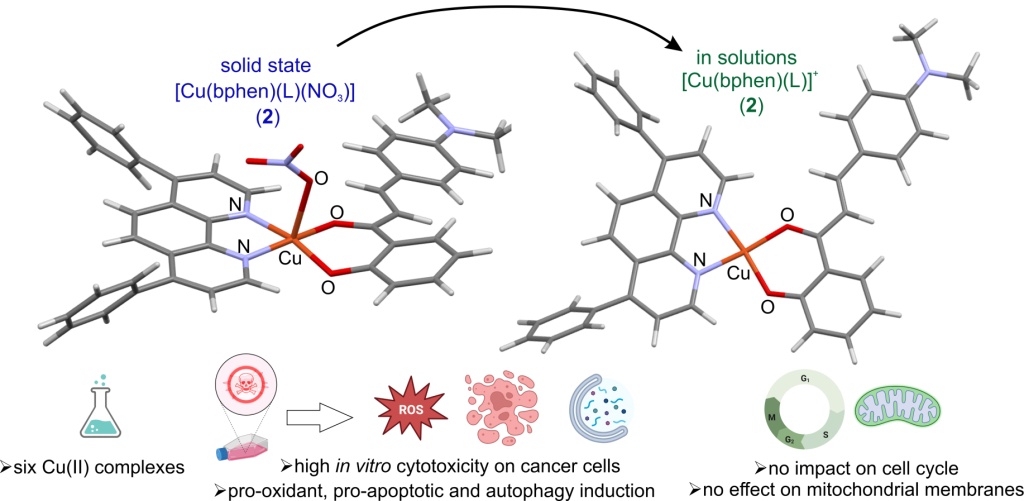Publication in Pharmaceutics
Heteroleptic Copper(II) Complexes Containing 2′-Hydroxy-4-(Dimethylamino)Chalcone Show Strong Antiproliferative Activity
Authors: Zdeněk Trávníček, Tomáš Malina, Ján Vančo, Marek Šebela and Zdeněk Dvořák
Full-text: https://doi.org/10.3390/pharmaceutics15020307
Text: A series of six heteroleptic copper(II) complexes with 2′-hydroxy-4-(dimethylamino)chalcone (HL) with the composition [Cu(N-N)(L)]NO3 (1–6), where N-N stands for dmbpy = 5,5′-dimethyl-2,2′-bipyridine (1), bphen = 4,7-diphenyl-1,10-phenanthroline (2), dbbpy = 4,4′-di-tert-butyl-2,2′-bipyridine (3), nphen = 5-nitro-1,10-phenanthroline (4), bpy = 2,2′-bipyridine, (5), and dpa = 2,2′-dipyridylamine (6), was prepared and thoroughly characterized. The in vitro cytotoxicity screening on eight human cancer cell lines identified complex 2, containing the bulkiest N-donor ligands (bphen) as highly cytotoxic against cancer cells, with IC50 values ranking from 1.0 to 2.3 μM, with good selectivity and low toxicity against healthy human fetal lung fibroblasts MRC-5. The cell-based assays, involving the most effective complex 2 in A2780 cancer cells, revealed its strong pro-apoptotic effects based on the effective activation of caspases 3/7, ROS overproduction, and autophagy in the A2780 cells while not impeding the cell cycle and mitochondrial membrane functions. The cellular uptake studies in A2780 and 22Rv1 cells uncovered no intracellular transport of the cationic complex 2, supporting the hypothesis that the in vitro anticancer effects of complex 2 are based on the combined extrinsic activation of apoptosis and autophagy induction.



